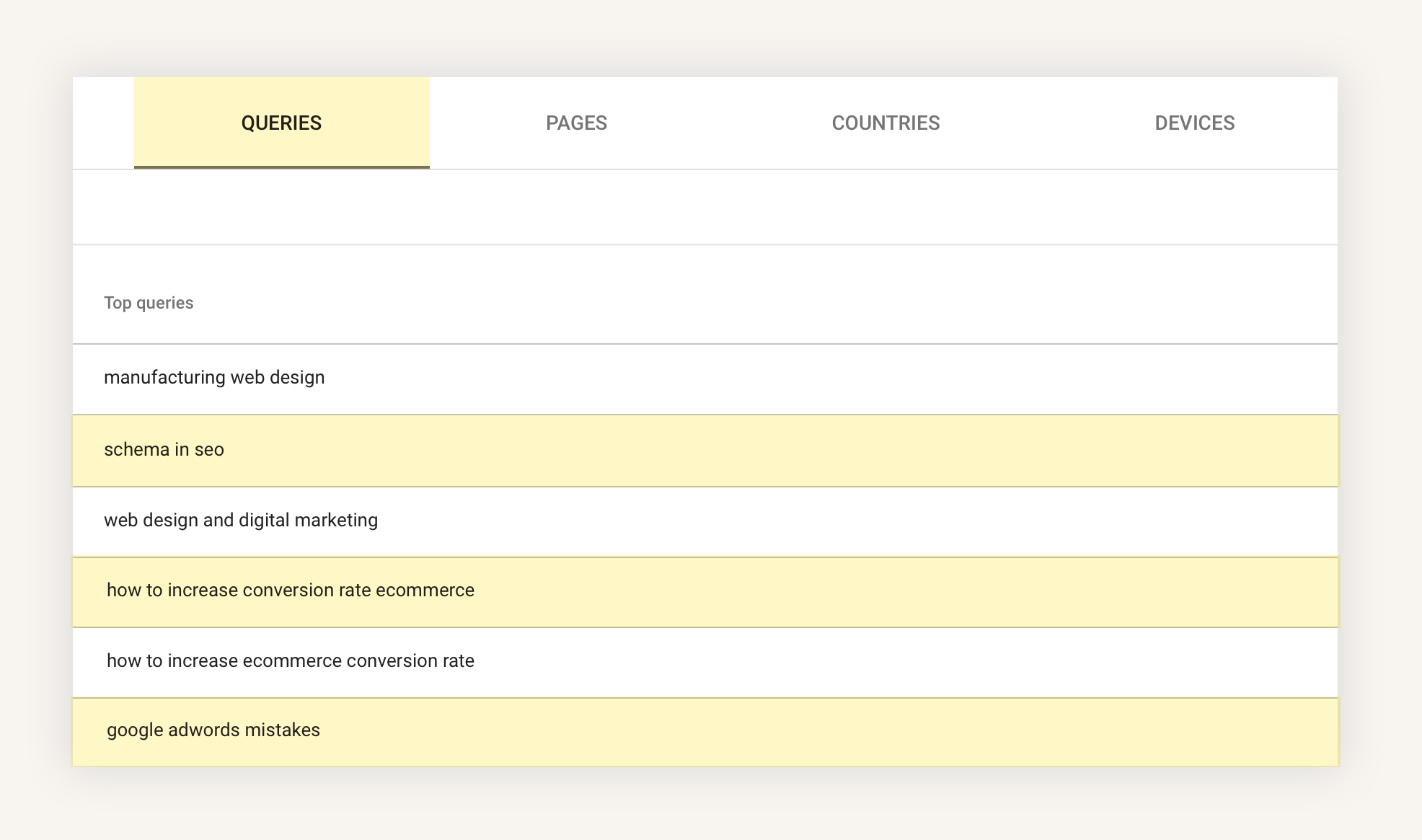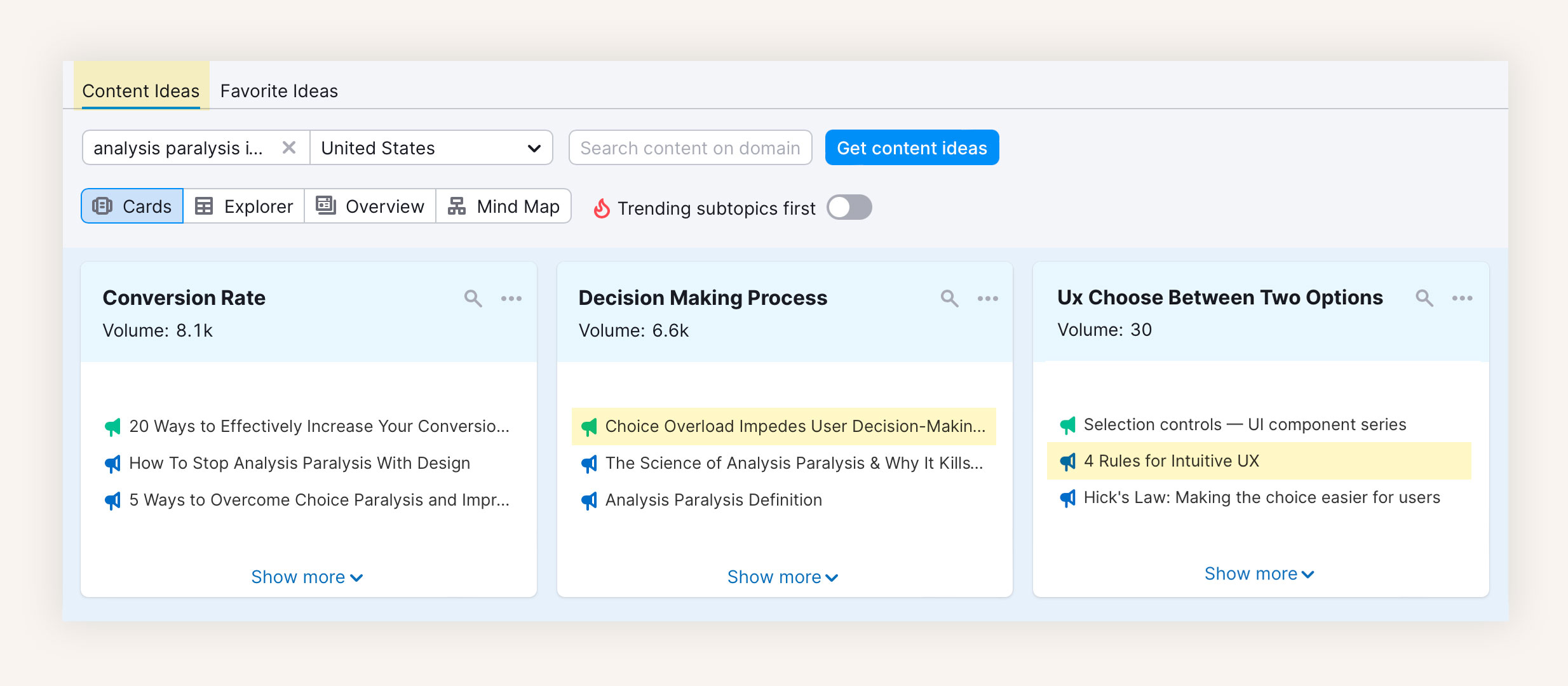A healthy and holistic digital marketing plan includes an investment in content development; blogs, videos, infographics, emails, newsletters, white papers, social posts. It can be exhausting. The good news is that some of the best content is stunningly simple to find.
If your current system is working, more power to you! But if you're feeling tapped out or need inspiration, here’s three quick and simple ways we’d recommend mining new, keyword-driven blog topics.
Three ways to dig up new blog topics
First things first, use the tools you have. At a bare minimum, most businesses have claimed their Google profile and have Google Search Console. This can be an untapped resource for great topics.
1. Explore your Google Search Console Quarry queries:
- Login and explore the Search results tab
- Use the compare tab to define search type, date, etc.
- Select the last 3-6 months
- Click average position (uncheck the other metrics for now)
- Filter by the position difference (far right)
- Take a look at the changes
(Beware of getting overwhelmed by the ranking changes. Search can be volatile. New content, index updates, features, and algorithm changes can affect your ranking day-by-day.)
- Note any keywords that are vital for you
- Note any keyword s or phrases that spark your interest
- Build topics around those phrases

2. Leverage tools like SEMRush
- Login to SEMRush and explore their Content Marketing menu
- Open the Topic Research tool
- Enter any relevant topics or keywords you’ve been considering
This tool will output top queries from around the web and content headlines that are getting the most interaction from Search. These topics may or may not relate to your ideal content or industry right off the bat, but you will still gain good bonus insight on what kind of content types are working right now. This may include competitor backlinks, or user related questions that you can consider answering.
- Click on Overview
- Note any backlinks or related questions
- Note any subtopics or related searches
- Use the filter to see trending and ranking difficulty
For more insight, explore the On-Page SEO Checker tool and take a look at the Semantic keywords, related keywords, or phrases to enrich your on-page content.

3. Search through Google Analytics
- Login and change your date range to the last 3-6 months
- Go to Behavior > Site Content > All Pages
- Filter to your blog using the search tool, if needed
- Note which topics and services have the most entrances (organic inbound traffic)
- Note what types of topics have the most time on page
- Note any topics ideas that are missing
How to create value from your findings
Now that you’ve created a reasonable list of keywords and topics, you’ll want to compare these topics with your target audience. Then, consider their goals. What problems are you best at solving for your ideal customer? What issues are they facing? Finally, consider your services. What services are your biggest wins? The challenge at this point is to take a given keyword phrase and mold it into a question worth answering. One that will truly give value to your audience and support your company’s expertise. Use these topics as inspiration as you move forward.
Topics we're now considering:
- Why Schema is a vital tactic for your product pages
- How to increase your stores conversion rates
- How much time should you spend A/B testing?
- How to find a balance between good design and a functional website
- How to use segmented lists to deliver custom content in Kentico
- What are the building blocks of Android app development?
- Why digital agencies have a bad rep
- Is content marketing overtaking digital marketing?
- What are the must-use digital marketing tools for websites?
Next Steps
Now that you have assembled some topics:
- Consider creating a content calendar segmented
- Create a strategy for both short-form and long-form topics
- Write content for your community, clients, partner, or peers
- Distribute it on paid or owned channels
- Track its impact and monitor any ranking changes
Content on your website, within your digital materials, and on social channels should tie together with a brand voice and a well-established value proposition. If you need help strategizing, creating, or optimizing content, drop us a line or give us a call at (414) 347-1866 to talk to a digital marketing expert.



